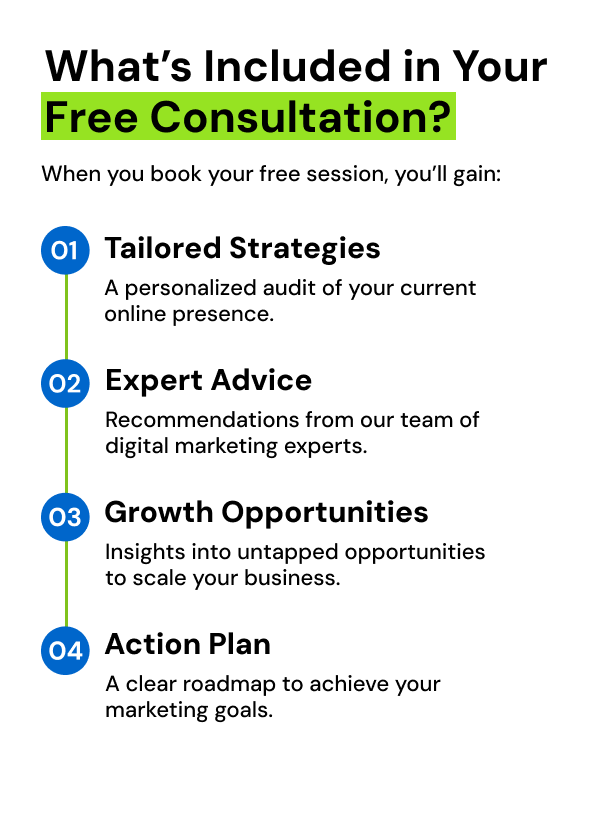Omnichannel Retail Advertisements In Action For Seamless Sho...
Omnichannel retail advertising is now the key to seamless shopping, helping a brand make informed decisions and drive sales. It is a strategy that integrates all customer touchpoints, both online and offline, into a cohesive experience. The core of this marketing means is ensuring a consistent brand message and experience when a shopper browses Instagram, walks into a store, or enquires from Alexa regarding product information.
Why does Omnichannel retail advertising matter?
Omnichannel retail advertising has its significance for these matters:
- 77% of shoppers prefer brands with an Omnichannel presence
- Omnichannel customers spend 30% more compared to the single-channel ones
- Retention rate for Omnichannel retailers is 90% more
The core elements of a cohesive Omnichannel strategy
A brand can deliver a seamless experience by aligning across:
- Physical stores – Digital kiosks, in-store signage, trained staff
Ensured offline touchpoints are meant to reflect online messaging and promotions
- E-commerce platforms – Marketplaces, mobile apps, websites
E-commerce platforms are designed to offer intuitive navigation, personal recommendations and real-time inventory updates.
- Social media and messaging – Chatbots, Facebook, WhatsApp, Instagram
At the social media and messaging centres, the customers are engaged with shoppable posts, DMs and real-time support.
- Advertising channels – Audio ads, native ads, CTV ads, video ads and display ads
Utilizing these advertising channels, brands with consistent targeting messaging can reach customers across multiple devices.
- Customer data platforms (CDPs) – Unified customer profiles
Behaviour is synchronized across channels to enable personalization

How can Omnichannel retail advertisement drive engagement?
Customers pass through significant stages of the purchasing journey, and Omnichannel advertising meets them at every stage:
- Discovery – Social ads, Google shopping, influencer content
The core is to spark interest among the audience with visually rich, targeted content.
- Consideration – Comparison tools, reviews and retargeting
Using helpful and relevant information, the brands nurture the intent of their target customers.
- Purchase – In-store QR code, mobile checkouts and BOPIS
Wherever the customers are, buying is made frictionless with these integrations.
- Loyalty – Personalized follow-ups and rewards
With tailored incentives, the brand invites customers to keep coming back.
How does omnichannel retail advertising help boost sales through seamless integration?
Along with engaging, Omnichannel retail advertising strategies even convert.
- Higher conversion rates
Brands, through consistent messaging, build up trust and reduce drop-offs.
- Average order value increases.
Brands encourage customers to buy bigger baskets through cross-channel upselling and bundling.
- Cart abandonment reduces
To remind users to complete their purchases, the brands can practice retargeting across platforms.
- Inventory turnover improves
Overstocking and stockouts are prevented through real-time visibility of stock levels.
Personalization is the heart of Omnichannel retail advertising
In this age, modern consumers expect only relevance. Omnichannel retail advertising enables:
- Dynamic product recommendations –
Based on browsing and purchase history, AI makes suggestions on items
- Localized orders –
Geo-targeted ads are effective at driving foot traffic to nearby stores.
- Behavioural triggers –
Audiences can be effectively re-engaged through emails or push notifications based on user actions.
- Voice and visual search integrations –
Product discovery improves through the use of smart devices and image search.
Tech stack essentials for execution
Brand delivers a seamless experience with the help of:
- CRM + CDP –
For personalization, unified customer profiles are to be created.
- Marketing automation –
Brands trigger real-time, cross-channel engagement on the basis of user behaviour.
- Inventory management systems –
Stock can be synchronized across online and offline channels.
- Analytics dashboards –
Using real-time insights, performance can be tracked and campaigns can be optimized for maximum effectiveness.

Challenges of Omnichannel retail advertising and how brands should overcome them
These are the few challenges that the brands should overcome to proceed with Omnichannel retail advertising:
- Siloed Data –
The solution is to integrate systems for a single customer view.
- Inconsistent messaging –
To solve this issue, the creative and copy should be aligned across platforms.
- Channel conflicts –
To overcome it, pricing and promotions can be standardized.
- Legacy tech –
The most effective solution is to invest in scalable, cloud-based solutions.
The future of Omnichannel retail advertising: AI, AR and Voice Commerce
Since Omnichannel retail advertising is fast evolving, the next move is:
- AI-powered personalization – What will dominate are predictive targeting and dynamic content.
- Augmented Reality (AR) – Product returns are reduced through virtual try-ons and immersive demos.
- Voice commerce – Now, customers are shopping via Google Assistant, Alexa and Siri.
- Shoppable video and livestreams – Interactive content enhances real-time engagement and conversions.
Conclusion
Omnichannel retail advertising is a necessity – considering it a luxury is a significant mistake. If brands are to drive deeper engagement, higher conversions, and long-term loyalty, they must create a cohesive and convenient shopping experience across all touchpoints.
Just as being present on every channel is important, it’s equally important to be consistent, personalised, and responsive wherever customers are. With the evolution of customer expectations, brands will stand out by unifying their messaging, data, and technology. The future is for those who seamlessly and smartly connect the dots.
